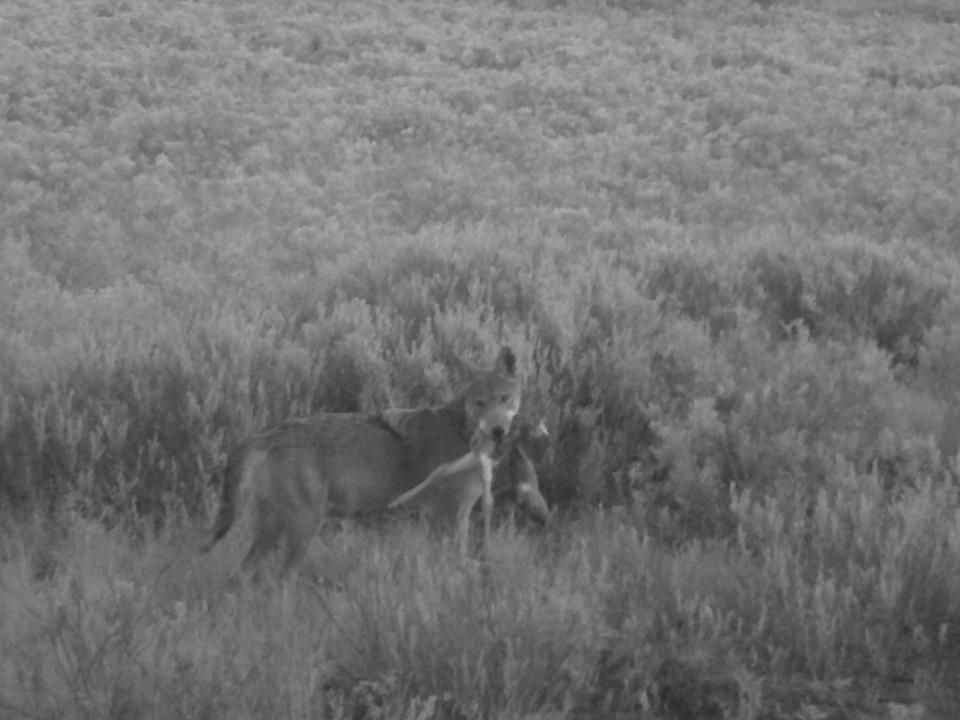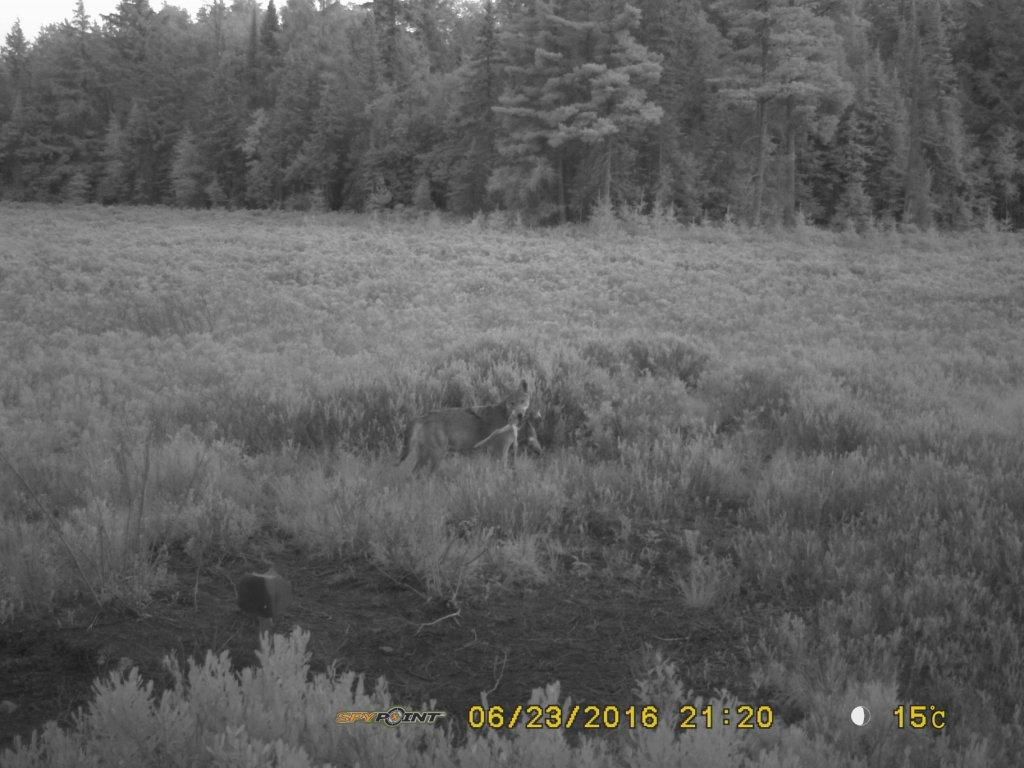-
August 3rd, 2016, 10:20 AM
#51

JBen - A few years back the MNR was pushing the story of the whitetail's decline in the park on the cutting of large stands of hemlock for beams for the Toronto subway. Given the area the park covers and the huge areas outside the park which were not cut, its a bit hard (impossible???) for a thinking man to believe. Re: the had winters - we see now that even with a moderate number of wolves/coyotes around, the deer recover from a bad winter in a couple of years. Back then the recovery took a couple of decades. Even the low pops following 2008 were nothing like the 60's and '70s.
-
August 3rd, 2016 10:20 AM
# ADS
-
August 3rd, 2016, 10:21 AM
#52


Originally Posted by
MikePal

That's true..and that is how nature balances an ecosystem...thru cycles of good and bad. Most hunters just don't seem to understand that, they want a permanent target enriched environment and if there is an ebb, they start looking to blame someone or something.
I don't mind the small ups/downs like what we have had since the good times in the 1990's. What I don't want is the wiping out of the deer like what happened in the 60's and 70's.
-
August 3rd, 2016, 10:28 AM
#53


Originally Posted by
werner.reiche

I can't ever remember anyone poisoning wolves - I'm sure it happened, but not in my time. The end of the bounty (1972) came about long, long after the wolf boom and the wiping out of Renfrew counties deer herd. As far as Renfrew county goes there were no deer and very few wolves by the time the bounty was ended, making it a moot point.
I'm not sure why you're trying to rewrite history here. As far as "balance" - the "balance of nature" is something that only exists in the Disneyesque mind. Real nature is a series of booms and busts - there is no balance.
So what you are saying is that the predators followed the prey, no matter what caused the prey to reduce.
When I started hunting in Eastern Ontario the deer numbers were not bad but not great, you would always see a couple in a week of hunting but never a lot, the wolf population was also not very high. The deer population exploded, we had a number of mild winters (you know the winters where you do not bother taking the sled out) and the wolf population followed suit, they increased in numbers as the deer numbers increased, generally about a year or two behind the deer population increase. With the drop in the deer population the wolves remained high for a year or two and then started to decline as well, less food and less deer. Why does everyone always blame the government for everything? The wolf is a natural element to the wilderness and there have always been smaller wolves in Eastern Ontario that were not coyotes but not the same as the Timber wolves you would find in Northern Ontario, many people called them brush wolves. Do you think it is that crazy to think that there is actually a different wolf in Ontario? To me it is crazy to write it all off as just another government conspiracy. Nothing in the proposal says that you will not be able to protect your family and or your livestock, if a wolf comes into your barnyard or a coyote and goes after your livestock then have at it but wolves and deer have lived in that area for a lot longer than white hunters have been there and the deer survived just fine.
-
August 3rd, 2016, 10:45 AM
#54


Originally Posted by
Fox

...The wolf is a natural element to the wilderness and there have always been smaller wolves in Eastern Ontario that were not coyotes but not the same as the Timber wolves you would find in Northern Ontario, many people called them brush wolves. Do you think it is that crazy to think that there is actually a different wolf in Ontario? ....
That is completely false. Prior to the 60's there were wolves and brush wolves (coyotes). Wolves were the big grey wolves. You do realise that prior to the 1920's there were no coyotes at all in Ontario - not even in the south. So yes, it is completely crazy to think that there is a "different" wolf in Ontario. It's not a different wolf - it's a coyote/grey wolf cross - well documented by researchers in Ontario and Maine and likely a few of the other northern states. There are still people alive - they're old though - that can remember when Ontario had grey wolves and no coyotes, so rewriting this bit of history will have to wait until they're no longer around.
As far as deer and wolves co-existing - well, the deer were not doing that well in Ontario prior to the settlers arriving and starting farming and killing the wolves.
-
August 3rd, 2016, 10:49 AM
#55

Wasn't referring to wide scale logging, over the park. But thought there was a specific "small" area, that served as a winter yard. Perhaps for deer outside the park. Don't know. The gist of the thinking, was that when the hard winters hit, and that yard no longer existing, the deer got pummelled.......over and above no management of the wolves.....it went to bust very quickly.
for example.
dogs are up in number in 47. The Loring yards. Imagine if in 2012 which would be just prior to the winter of 2013 (the ice storm winter) the heart of the Loring yards were logged hard.
Can an anyone here or in the MNR predict what the winters of 2017 and 2018 will be like??
herds throughout central Ontario seem to be struggling thanks mostly to a few hard winters. On top of that, dogs have been in rise, and now will be even further protected.
faxt of the matter is hunting of wolves in the area already is minimal. That's actually acknowledged in that study. Funny I don't see that study mentioning deer/moose/grouse/rabbit/fox being down.
lets hope next winter isn't hard because from everything we have, or see they are really setting the table and it's simply illogical, or at best counter to striving for "balance". That's not achieved by stacking the deck
-
August 3rd, 2016, 10:57 AM
#56

Re: rabbits and grouse - my guess on this is that its avian predators doing the damage here. Not sure about wider scale, but definitely up at my bush lot, that's what's been going on.
-
August 3rd, 2016, 11:05 AM
#57

Few ways to look at that Werner. Let's assume it's Great Greys and a few others putting a beat down on Rabbits/Grouse. Which are a prime food source for Coyotes, if not "wolves".
if that food source for predators is going down, competition is up. So what will the coyotes and coy dogs turn to more, especially in winter if there's less rabbits/grouse/squirrel.
fawns?
who are already a source of "concern"?
So where's the logical rational, for further protection of a predator thats
A) on the rise
B) already, and this is acknowledged by the people putting forth the recommendation. That mortality from hunting is minimal, as is!!
Last edited by JBen; August 3rd, 2016 at 11:07 AM.
-
August 3rd, 2016, 11:46 AM
#58

Wow, we can't even get the hunting community on the same page. Looks like the anti-hunters are going to win this round too, on top of the win they got a few months ago when the northern Ontario wolf proposal was turned down.
-
August 3rd, 2016, 01:12 PM
#59

well if wolves are not a problem and deer numbers are down then what's this.
this is in WMU 50 north of Huntsville
[IMG] [/IMG]
[/IMG]
[IMG] [/IMG]
[/IMG]
If you keep doing what you've always done. You'll keep getting what you've always got!
Since light travels faster than sound, some people appear bright until you hear them speak.
-
August 3rd, 2016, 01:28 PM
#60

Looks more coyote than wolf to me, have been hunting and killing them since the early 1970's , have quite a few albums with pictures that look like that one , only they are dead.
And yes coyotes do kill and eat fawns and they also have their own families to feed.






 Reply With Quote
Reply With Quote









